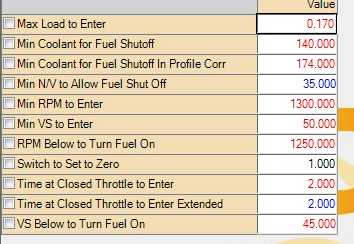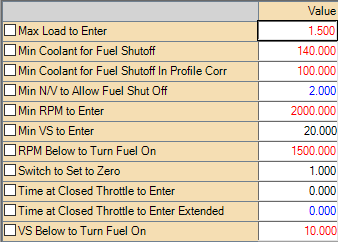- Joined
- Sep 12, 2023
- Messages
- 2,406
- Location
- North Ridgeville, OH
- Cars in Garage
- 2
- Vehicle Details
- 1997 Thunderbird 4.6, 1998 Mark VIII LSC
Grog6 said:Don't teachers get Vacations?
Don Pardo voiceover:" For the low low price of a Premium Disney vacation, that knowledge could be yours..."
I feel your pain.
General Zod said:fine, then it's an issue of money, lol.
Grog6 said:It not so much the money, it's going to be the fact we didn't spend that money on someone else, lol.
That's what keeps us from doing it; to live thru it, I'd have to spend at least 3x the training cost, total.
I can't get to the ups store till Saturday, BTW.
I had a thought (gasp) about my bucking issue at CT. Originally I was convinced it was the converter locking/unlocking rapidly. So I checked my "bucking" logs for any signs the TC was doing anything it shouldn't have been and found no evidence to support that . So I took the data at face value and decided to search elsewhere for the problem.
I was reading on the SCT boards and found a found a post that excessive EGR combined with a heavier cam overlap could generate a low RPM/TP misfire.
After digesting that information and realizing that I (still) have a bit of drivetrain play, I envisioned in my mind the very real possibility that the "sound" of the converter doing a jig is really just drivetrain thunks due to engine misfires during deceleration. CT, engine misses and a locked converter would definitely cause the car to buck.
Lo and behold, during deceleration my load is upwards of 15-18% (depending on speed) at an RPM of 1100-1400. So I checked the EGR tables and sure enough, EGR is maxed out at 10% in the 20% load/low RPM areas where I'm decelerating. The issue of it only happening after the car's been out on the road at temperature for a while? Seems to coincide perfectly EGR start delay table. All of a sudden, this thing started to make a LOT of sense.

I found a scalar "Min. airflow for EGR enable" and set it to 1.4 #/min, since cruising at 30 MPH shows an airflow of 1.5+ #/min. In theory this will prevent there from being any EGR flow at the load levels I see during deceleration, and in turn cure the engine misfire causing the car to buck at CT.
I also found that the problem was DRASTICALLY reduced when I had the car forced in open loop to re-tune the (slightly enriched) MAF transfer. So I'm also setting my O2 biases to enrich the mixture at the conditions of low speed decel as well. Hopefully this combination of less EGR and a little more fuel kicks this misfire in the butt.
Time to go see if this works.


 Darned lake effect! lol
Darned lake effect! lol











